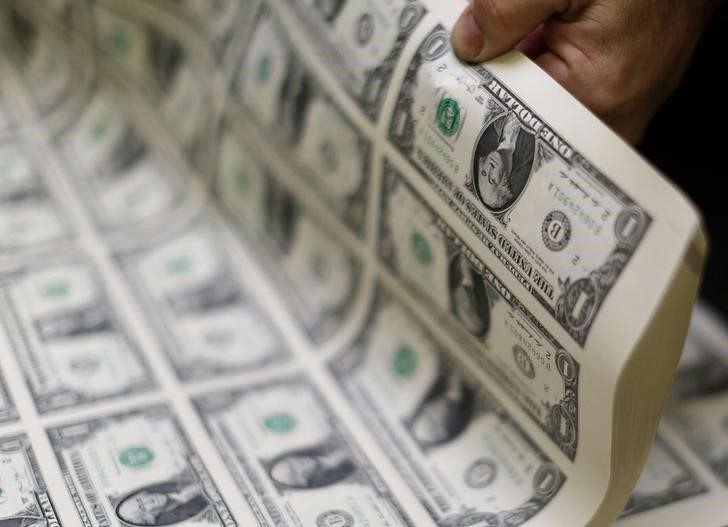Investing.com - The dollar extended gains against the other major currencies on Tuesday after China’s central bank cut interest rates in a bid to bolster economic growth after a plunge in the country’s stock market.
The U.S. dollar index, which measures the greenback’s strength against a trade-weighted basket of six major currencies, hit highs of 94.25 following the move and was last at 94.02, recovering from the eight-month trough of 92.52 set on Monday.
The People’s Bank of China cut interest rates by 25 basis points to 4.6%. The bank also cut the reserve requirement ratio for large lenders to 18.0%.
Fears over a global economic downturn, led by a slowdown in China’s economy have intensified in recent days, accelerating a selloff across global markets.
Asian and European stocks rebounded on Tuesday, but shares in China and Japan continued to slump.
Shares in Shanghai fell around 8% overnight, one day after the worst trading session since 2007, dubbed ‘Black Monday’.
Recent steep declines in Chinese equity markets have sparked fears that they will weaken the world’s second largest economy and undermined investor confidence in the government’s ability to revitalize economic growth.
The turmoil in markets began when China unexpectedly devalued the yuan on August 11, sparking fears over the condition of the economy.
The dollar rallied around 1% against the euro and the yen, with EUR/USD at 1.1502 backing further away from Monday's eight-month peaks of 1.1713. USD/JPY advanced to 120.03.
Sterling trimmed back gains against the dollar, with GBP/USD last at 1.5784 after rising to seven-week highs of 1.5819 earlier. USD/CHF was up 1.3% to 0.9422.
The Australian and New Zealand dollars extended gains, with AUD/USD up 0.98% at 0.7225 and with NZD/USD climbing 0.88% to 0.6534.
The Antipodean currencies are sensitive to news out of China, a top export market for Australia and New Zealand..
Meanwhile, USD/CAD was down 0.74% to 1.3187, extending its pullback from the 11-year high of 1.3298 hit overnight.
